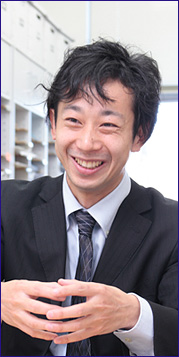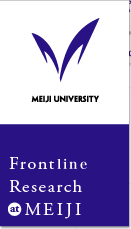

Humans create and express content and cannot help but consume it
When they hear the term “content,” many people think of music, images and games. However, there is much more to “content.” Japanese law defines content as “something that is developed through human creative activities.” For instance, “mutterings” through Twitter, speaking behavior and even gestures could be considered content if expressed by people.When we look at it in this way, don’t you think that humans are creatures who cannot help but create content? I think that humans have a fundamental desire to create content and express it through communication.
Moreover, humans are creatures who cannot help but consume content. For example, when many people are reading books or listening to music or gazing at advertisements in a train, they are consuming content even for however short a period of time. If people were prohibited from reading books, listening to music or even having a conversation in trains, most of them would feel oppressed.
I designate humans as beings who cannot help but create, express and consume content, and have a new name for humans: “content respirators.” I believe that we cannot build a new human-content relationship unless we designate content as being as important as food and air.
Research target is “media” that exist between people and content
Media are always involved between humans and content. There are mainly two types of media: production media, which create and express content, and consumption media, which consume content. At my laboratory, we are conducting research primarily focusing on how we perceive these media and ways to create them.For example, a technology called augmented reality (AR) involves visualization by overlapping a virtual world onto a real world. This technology has been utilized in various items such as the Sekaikamera smartphone application, which superimposes and displays “mutterings” based on GPS information and is considered to be very convenient. However, a display fills up with comments after it starts being used and becomes very hard to see. This issue is known as “air tag contamination.”
A proposal from my laboratory addressed this issue with the option of viewing added-value information left to an individual’s discretion in light of information overloads in our current society. Consequently, we proposed F.A.R. Vision: Glabellas Fader of Augmented Reality that enables control by using glabellas.
Unique research examples
There are many more examples of research into innovations such as sampling calligraphy. Amid a situation in which we are familiar with computerized fonts, the power of Japanese calligraphy is being recognized and focused upon as a means of expression. In this respect, research has been promoted with the aim of computerizing this calligraphy and reproducing brush movements. However, this system was hard to use although its simulation was successful. As a consequence, we considered adopting a sampling technology used for electronic musical instruments.Sampling Calligraphy:
We scanned the image with a movement similar to tracing existing calligraphy. By utilizing “fading (kasure),” “nijimi (ink bleeding / deblurring)” and other characteristics of Japanese calligraphy, we made it possible to draw a new line. In addition to selecting the timing of kasure or nijimi, the sampling calligraphy also enables one to create new lines according to various parameters even beyond calligraphy, for making fish prints and fireworks, for example.
SeekRopes is another example. Today, you can enjoy music or moving images using computers, and seekbar is a convenient interface to easily move to portions that you prefer by sliding a tab. We have reached a point where we can really enjoy music and images much more actively and conveniently than was possible using tapes. At my laboratory, we considered ways to enjoy media in a more active manner beyond simple playback and made seekbar into a rope.
SeekRopes:
Loop playback is realized by looping the rope and repeat playback of a playlist can be done by connecting several ropes into a necklace-like structure. Remix is also possible when the rope is trimmed into pieces. This was a proposal applicable to production media and consumption media as a matter of course.
Research that seeks and creates a future
In this way, my laboratory implements research considering media that connect people and content. At the same time, our coverage of a broad range of areas is distinctive since we do not limit content. There is a vast number of research themes.Rather than research that takes a conventional approach of building expertise by carrying out in-depth research related to one theme, my laboratory places importance on the creation of new research. In other words, we are creating a future. It is essential to showcase an image of a future that we aspire to through implementation because people will not understand unless the future is depicted visually. Nothing will change solely by criticizing something that currently exists in the world. Our goal is to transform the era.
Although there is a graduate student in my laboratory who studied music as an undergraduate, she is the one who originally proposed the aforementioned Fader for controlling AR with glabellas. Now, she is conducting research that has never been carried out by anyone else in the world on a tasting device to change the quality of taste using a computer.
We cannot broaden our perspectives by holding onto the idea that “this is what I specialize in.” In order to create a future, we need to be aware of things that others do not recognize. In this respect, we are conducting research that will “seek and create a future” rather than promoting “in-depth research.”









